Last-Minute NYC Holiday Gift Guide 🎁
We’ve created a holiday gift guide with presents for the intrepid New Yorker that should arrive just in time—


The restoration of the Veterans Room in the Park Avenue Armory, located on Park Avenue and 67th Street, was recently completed, after fourteen months, by the Swiss firm Herzog & de Meuron. The Veterans Room is one of the few surviving interior spaces in the entire world created by Louis C. Tiffany and other prominent artisans associated with this project. In fact, at the time, Tiffany was known only as a landscape painter. He was 31 and hadn’t created his famous Tiffany Lamps yet.
Before our visual tour begins, it’s important to note that in the year 2000, the Park Avenue Armory was named one of the 100 most endangered historic sites in the world by World Monuments Fund. Through the efforts of the non-profit group Park Avenue Armory, a restoration effort was launched to not only restore, but also to reimagine the space.
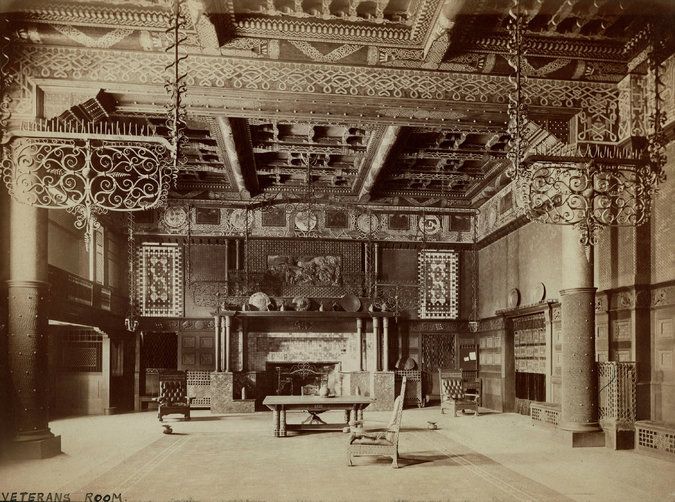
The Veterans Room as it looked in 1881. Image via Park Avenue Armory
The Veterans Room was originally designed in 1881 by Louis Comfort Tiffany and an impressive team which included architect, Stanford White, interior designer, Candace Wheeler, and painter Samuel Colman. Stanford White was 27, and had just joined the firm McKim, Mead & White when he began as a consulting architect on this project. When the room was completed, it was declared by The New York Times as “undoubtedly the most magnificent apartment of its kind in this country.”
But this should not be a surprise, considering the background of the Park Avenue Armory and its members. The Seventh Regiment Armory consisted of an elite group of men, with prominent family names of the Gilded Age, like Vanderbilt, Van Rensselaer, Roosevelt, Harriman, and Livingston. Often referred to as the Silk Stocking regiment, this was the only privately funded armory – each room looking every bit as decadent as the near-by homes its members lived in.
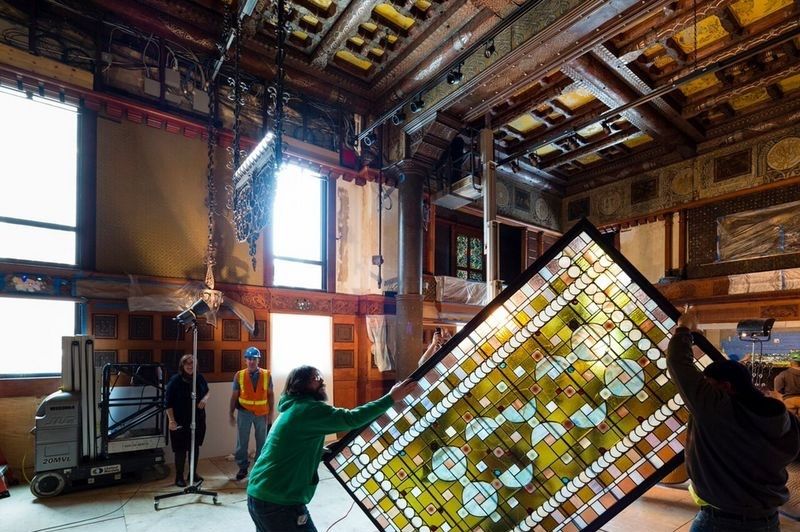
Process shot of the Veterans Room under restoration. Photo by James Ewing
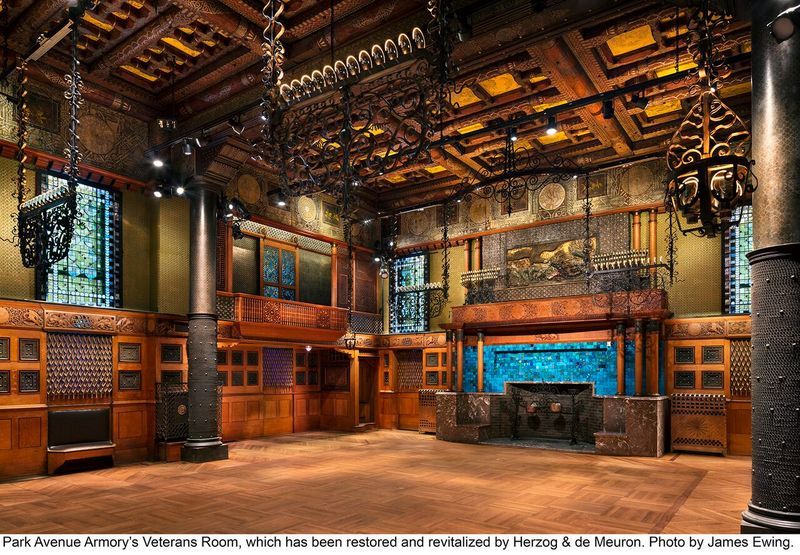
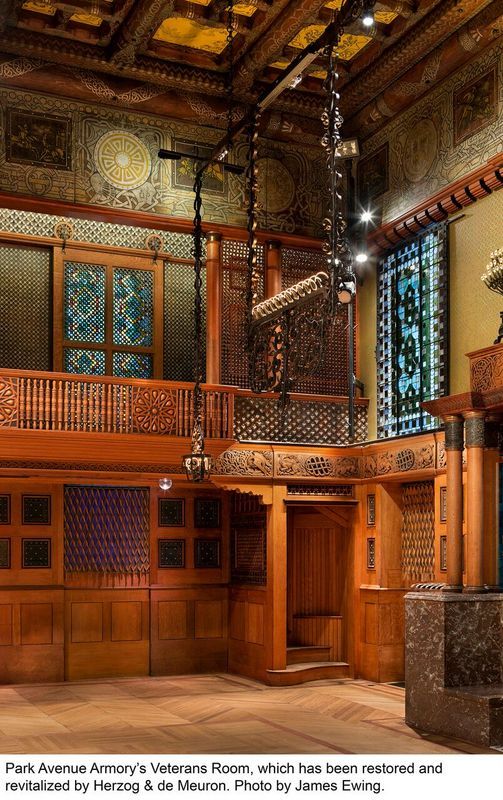
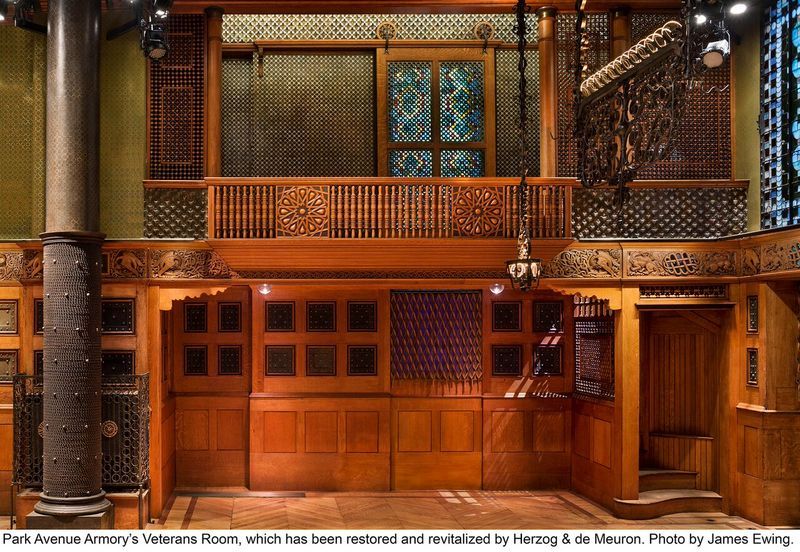
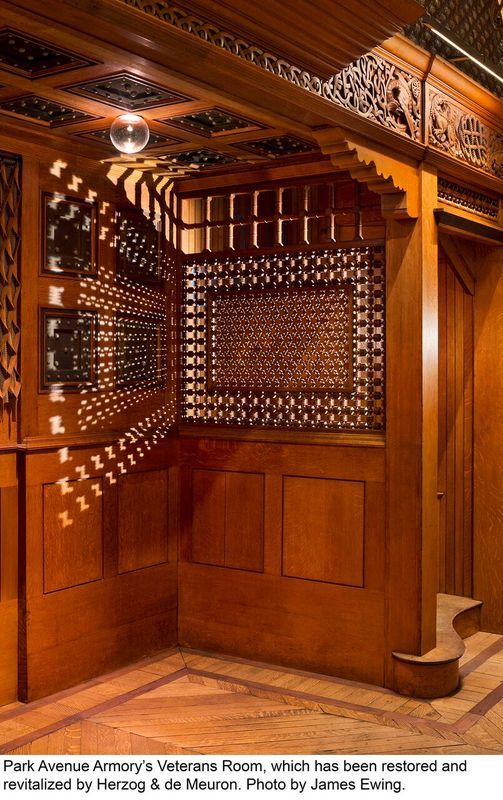
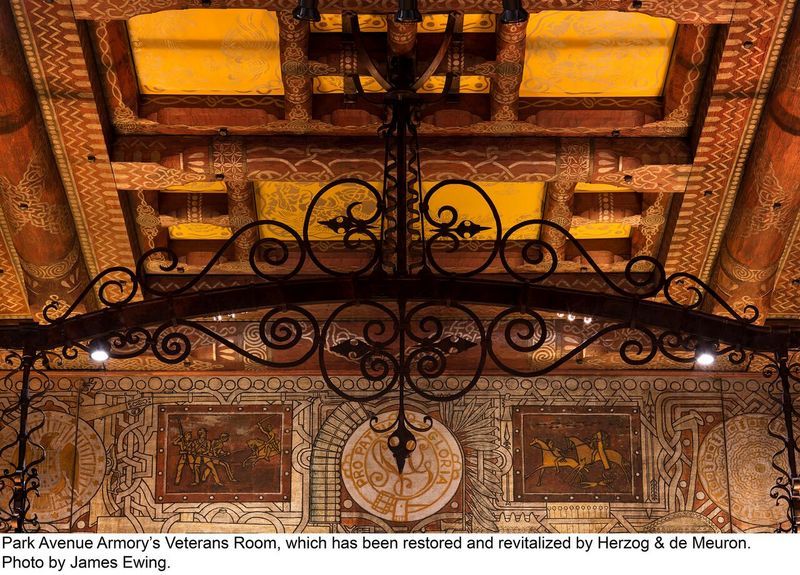
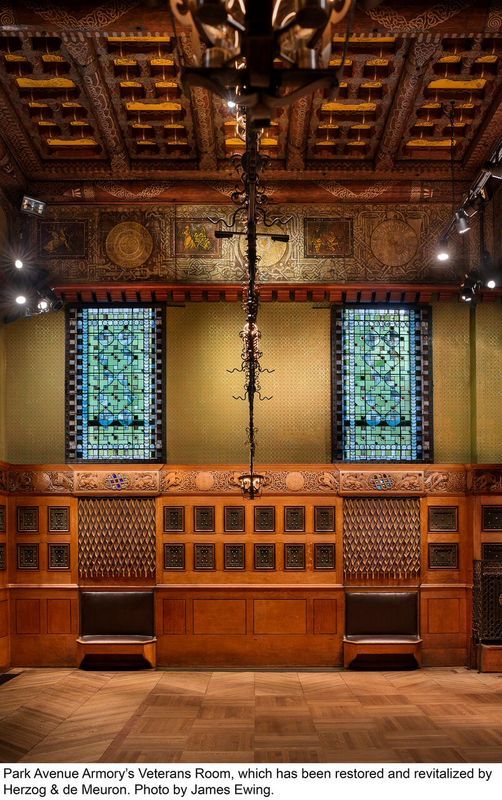
When the restoration began, they found the ceiling covered with brown paint. Removing the paint, they uncovered ax-hewn California redwood ceiling timers, with surviving metallic painted designs. The Tiffany windows with red glass, glow blue when the western sunlight strikes from a certain angle. Columns wrapped in nautical chains believed to have been used on New York Harbor piers. Hand-pressed blue tiles by Tiffany were restored and revitalized.
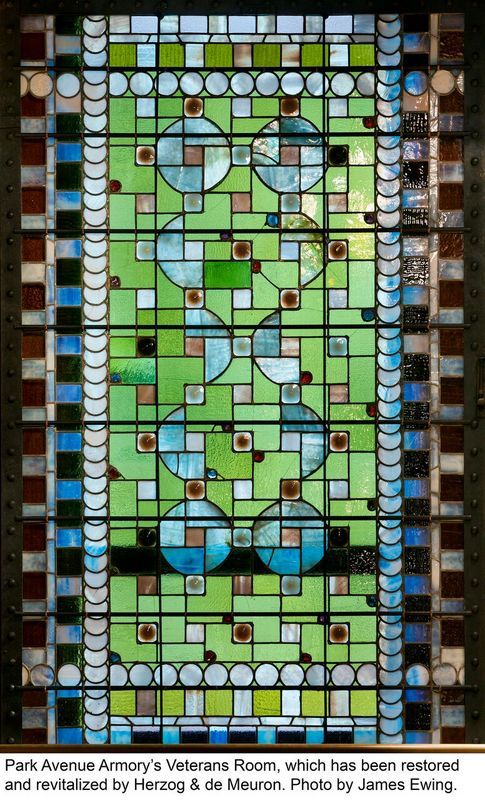
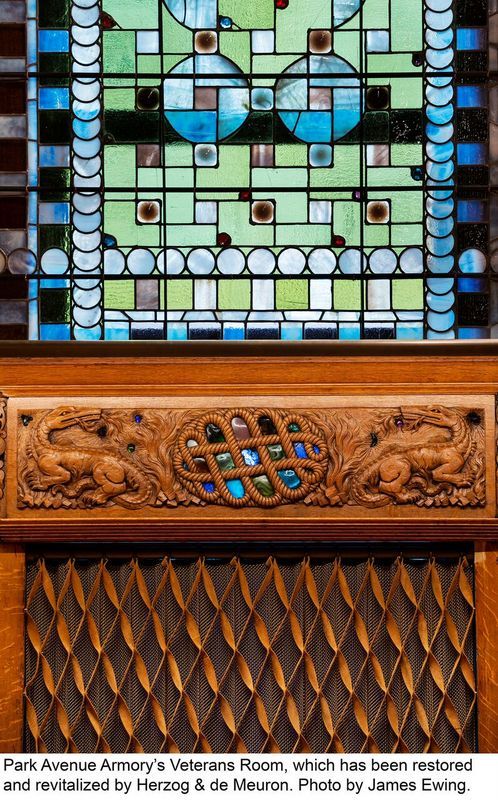
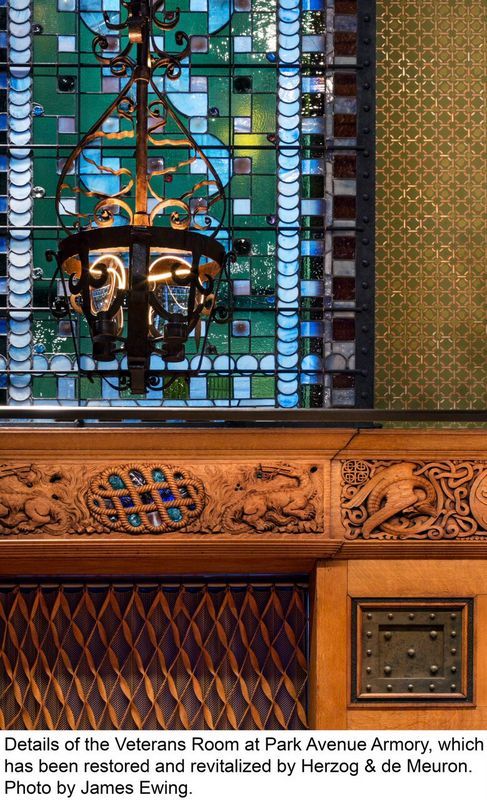
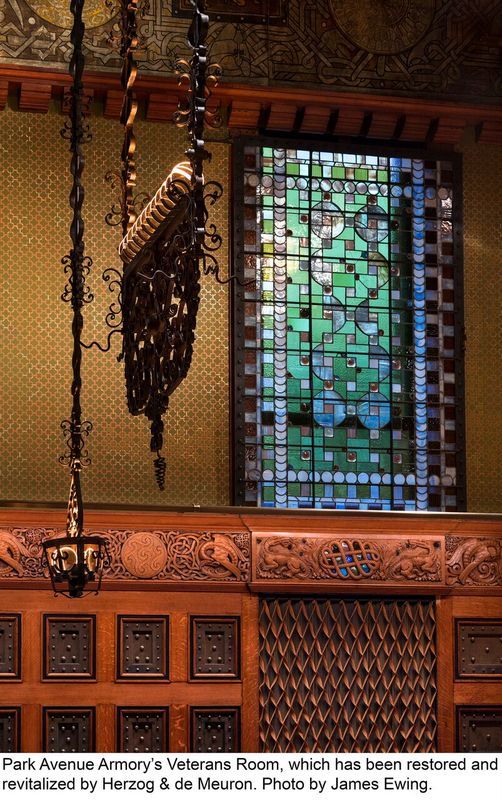
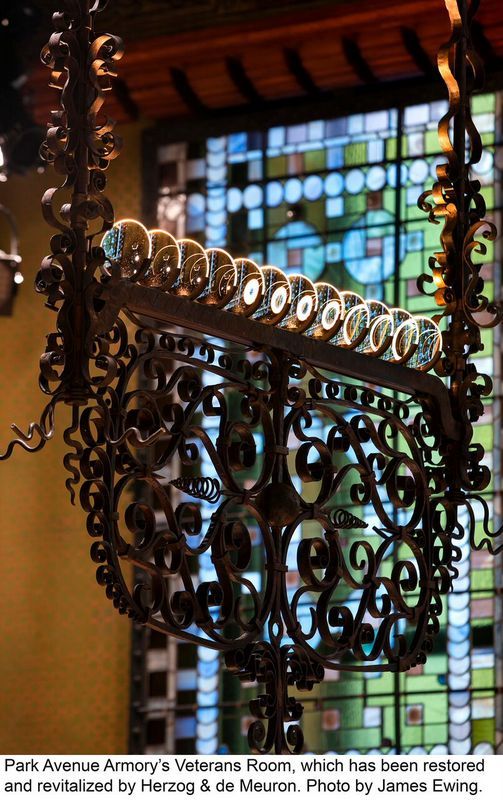
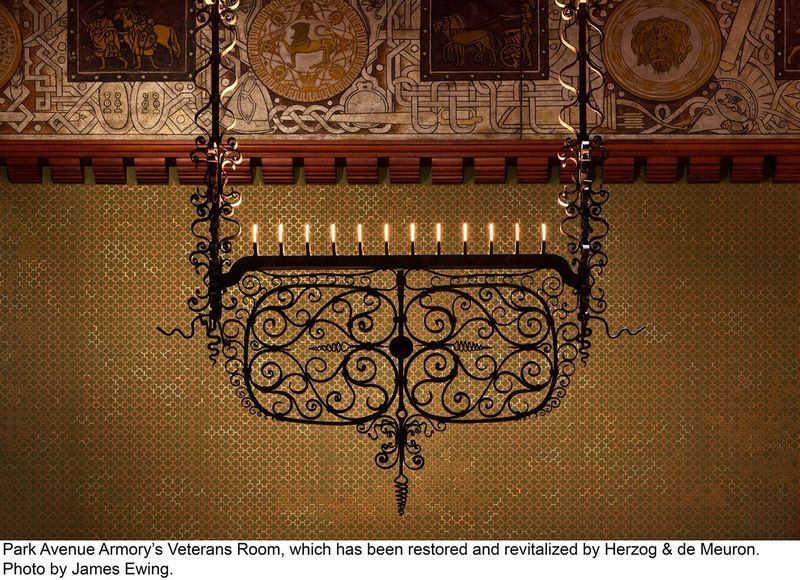
A small patch of the original wallpaper by Tiffany and Wheeler was discovered. This allowed for the chain-link pattern in green, copper and aluminum to be recreated. The original wood and metalwork, gas light fixtures were electrified in a way as to recapture the glow of the original room under gas light. Just below the ceiling, the room is surrounded by a frieze, which was originally done by Francis Millet and George Yewell.
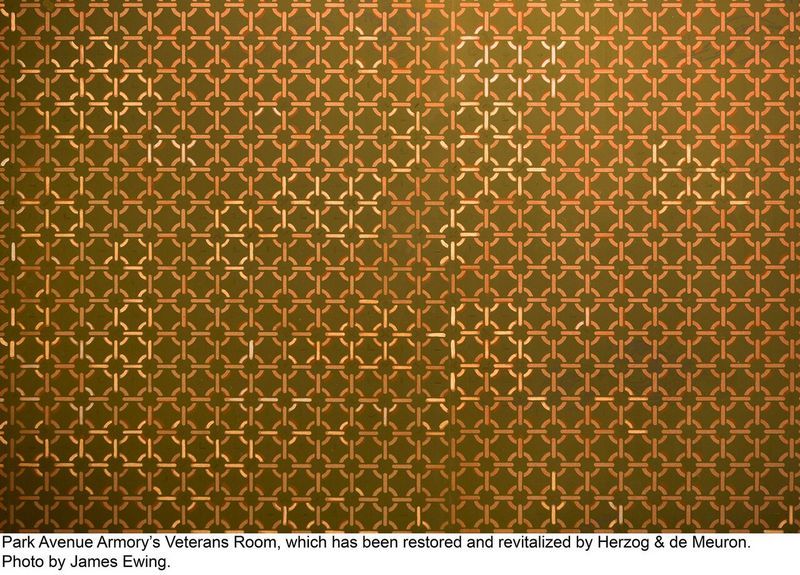
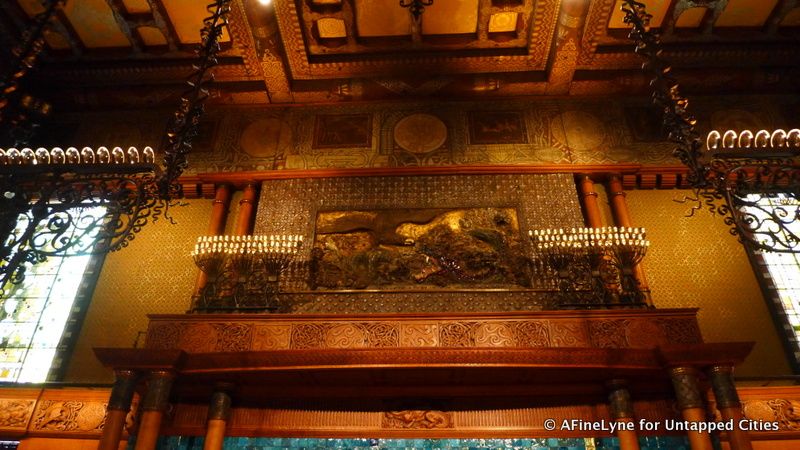
Above the fireplace is a Tiffany made glass and plaster mural depicting good vs evil.
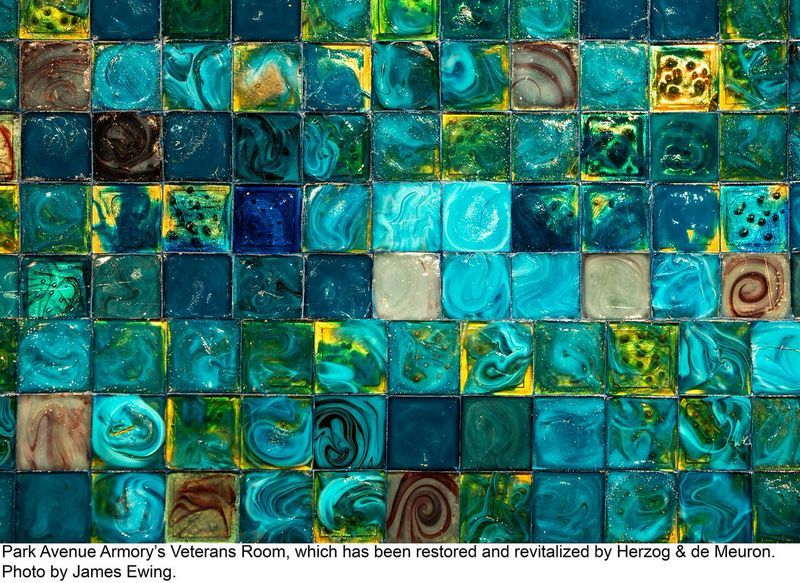
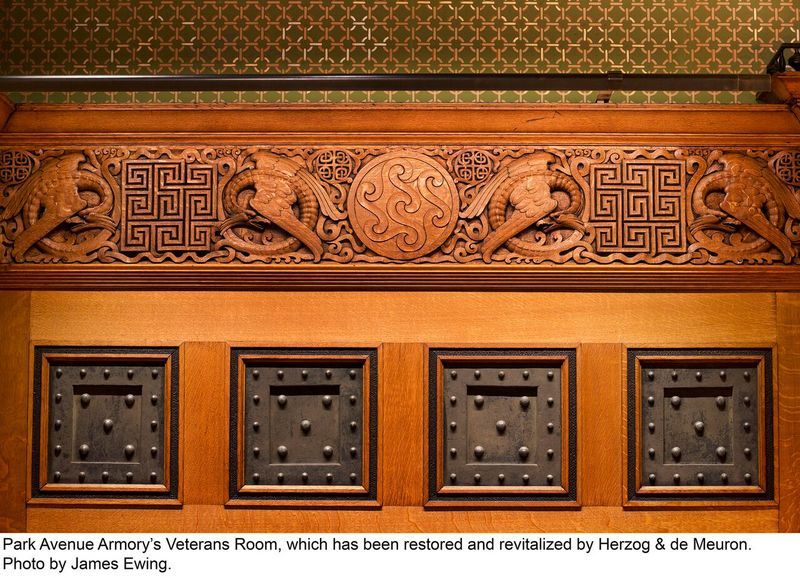
Even before the restoration, the Park Avenue Veterans Room appeared as a film location in Boardwalk Empire, serving as the interior of the Commodore’s house. The room is now open to the public and will be used for small-scale events including lectures, jazz and new music, curated by jazz pianist, composer, and MacArthur Fellow Jason Moran, with their performance schedule beginning this month.
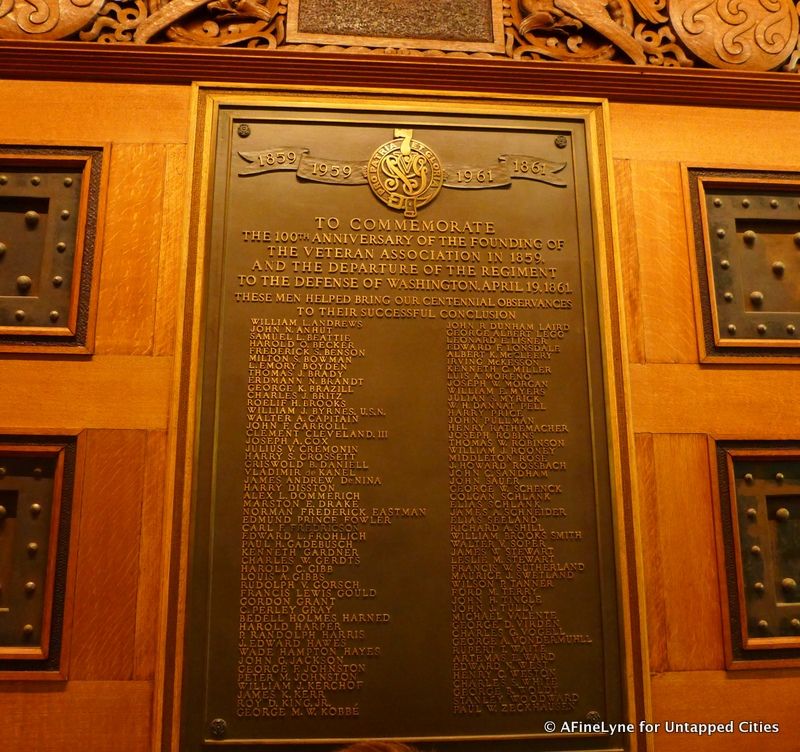
Read more about NYC’s many remaining armories. Contact the author at AFineLyne.
Subscribe to our newsletter